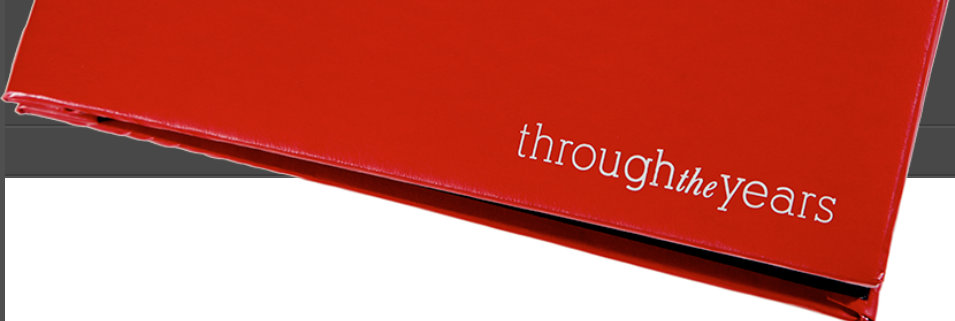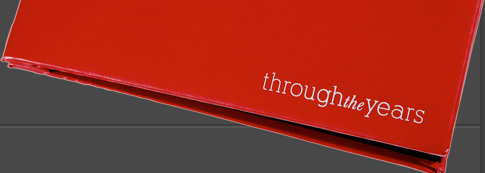

LongtonOnline.co.uk



Significant Dates

Significant Dates
Significant Dates in The History Of Longton
* = approximate dates 1153 First document to mention Longton ( signed by Eafward, priest of Langetuna ) 1153 - 1160* eafward, priest at longton 1205 Langeton 1278 Longeton late 13th century simon the clerk & william of yiveley, priests at longton 1309 - 1311* thomas the clerk, priest 1317 - 1348* adam the clerk, priest 1391 Longton Middle Ages Longton Chapel served by priests from Penwortham 1504 First mention of William Walton, priest 1517 William Walton founds a Chantry at Longton 1528 William Walton dies and leaves a chalice and Mass Book to Chapel 1535 Dissolution of Monasteries Act: Penwortham Priory dissolved. Sir Henry Fleetwood, one of Henry VIII's Commissioners, foresees the Protestant reformation and revokes his own gifts to Chantry. 1539 john walton, priest 1541/2 ralf Garstang appointed priest. 1547 Chantry Act of Parliament; at Longton, no such trace of one was found William Walton's nephew Christopher inherits Sir Henry Fleetwood's Chantry property and re-founds the grammar school at Longton Chapel for the whole parish, to perpetuate in some way his uncle's benefaction. Connection between this school and the older foundation was assiduously avoided. 1553 Mary Tudor ascends throne and restores Catholicism. Rev Ralf Garstang unsuccessfully attempts to restore original school foundation. Later, when protestantism is restored, Ralf Garstang tried before church court, found guilty of adhering to Catholic Faith, and i s lucky to get away with only being defrocked. School reopened four years later. 1553- Chapel under pastoral care of lay reader-schoolmasters, such as Gilbert Mawdesly, and Mr Barker, described as lecturer at Longton Chapell. 1577 Longton Chapel marked on Saxton's map of Lancashire. 1608 October - Bishop's Visitation: catholics and more orthodox villagers complain about protestant Reader- lecturers at Chapel. Bishop appoints first Anglican Minister - Rev Edward Singleton. 1639 Appeal for Longton to be made into a separate parish refused. Civil War: John Fleetwood, Chapel's main benefactor, forfeits property. 1648 - 1652 Protestant Divine appointed - Richard Briggs. 1660 - 1665 No ordained clergy man in whole of Parish of Penwortham. 1660's Heavy taxes imposed on owners of every hearth: 89 in village. in 1666 Largest house, belonging to Alice Sudell, had six hearths. 1671 Rev James Threlfall, also curate at Heapey, at Chapel. 1676 Rev john Harrison ordained deacon and appointed to Longton on same day. Grammar School flourishing under William Bannester ( died 1700 ). Early 18th Century Ancient customs prevail: infamous women had to stand on a stool in chapel wearing white garments; ruffians put in stocks; ducking stool employed to punish old scolds in some remoter part of the village. 1701- 1750 Timothy Corless Curate-Schoolmaster for 49 years ( despite much protest due to his lack of Orders ). 1747 Grammar School removes to Hutton. 1766 Rev L Bateman applies to rebuild the old chapel. 1761 Enclosure Acts - Common Land auctioned, much to dismay of villagers. Cattle gates on Longton Marsh are bought, giving right to graze cattle. 1772 Longton Chapel taken down after Easter and rebuilt. 1773 Chapel completed, capable of holding 390 persons. 1806 A new school, funded by the four Lords of the Manor, opened in Marsh Lane. Financial difficulties force it to merge with Hutton before end of century. 1807 Wesleyan Chapel opens in Marsh Lane. Early 19th century Poorhouse established at cost of £1000. Annual sum of money granted from parish on St Thomas' Day. 1815 Anglican Sunday School founded in a workshop, moving to a tithebarn before proper building erected next to church in 1818. 1833 Wesleyan Chapel enlarged. 1837 Primitive Methodists build their own chapel in Chapel Lane, after splitting with the Wesleyans. 1830's Evangelical Protestantism arrives in Village. Mormon leaders from America preach in marsh lane outside wesleyan chapel and convert many people. Longtoners contribute £100 to first mormon printing press. 1872 Longton described by Hewitson as one of the prettiest in the country. 1872 New Wesleyan Chapel built next to original one. 1885 Old Chapel demolished; new church built 1886 in neo-gothic style.Old Stocks removed from north-east corner of graveyard: stone supports used as gateposts for cottage in Frankland's Fold. 1882 Preston to Southport Railway comes to village; unfortunately Longton Bridge Station well away from domestic centre of village. 1893 St Oswald's Catholic Chapel opens 1894 St Oswald's School opens in part of Chapel. 1894 Catholic Parish of Longton officially established. 1925 Council School opens in School Lane ( lane named after a small Dame School which once stood near the church ). 1938 Longton becomes a separate Anglican Parish ( 299 years after first applying ). 1960's Decade of destruction: railway closes; Manor House demolished; Old Sunday School replaced; Brickcroft and Brewery lose their chimneys. St Andrew's Church Hall replaces Old Sunday school building. 1965 St Oswald's Church replaced with new building and War Memorial relocated to front of new church. 1970's onwards - massive house building programme which completely changes the look and culture of village.



Significant Dates
Significant Dates in The History Of
Longton
* = approximate dates 1153 First document to mention Longton ( signed by Eafward, priest of Langetuna ) 1153 - 1160* eafward, priest at longton 1205 Langeton 1278 Longeton late 13th century simon the clerk & william of yiveley, priests at longton 1309 - 1311* thomas the clerk, priest 1317 - 1348* adam the clerk, priest 1391 Longton Middle Ages Longton Chapel served by priests from Penwortham 1504 First mention of William Walton, priest 1517 William Walton founds a Chantry at Longton 1528 William Walton dies and leaves a chalice and Mass Book to Chapel 1535 Dissolution of Monasteries Act: Penwortham Priory dissolved. Sir Henry Fleetwood, one of Henry VIII's Commissioners, foresees the Protestant reformation and revokes his own gifts to Chantry. 1539 john walton, priest 1541/2 ralf Garstang appointed priest. 1547 Chantry Act of Parliament; at Longton, no such trace of one was found William Walton's nephew Christopher inherits Sir Henry Fleetwood's Chantry property and re-founds the grammar school at Longton Chapel for the whole parish, to perpetuate in some way his uncle's benefaction. Connection between this school and the older foundation was assiduously avoided. 1553 Mary Tudor ascends throne and restores Catholicism. Rev Ralf Garstang unsuccessfully attempts to restore original school foundation. Later, when protestantism is restored, Ralf Garstang tried before church court, found guilty of adhering to Catholic Faith, and i s lucky to get away with only being defrocked. School reopened four years later. 1553- Chapel under pastoral care of lay reader-schoolmasters, such as Gilbert Mawdesly, and Mr Barker, described as lecturer at Longton Chapell. 1577 Longton Chapel marked on Saxton's map of Lancashire. 1608 October - Bishop's Visitation: catholics and more orthodox villagers complain about protestant Reader- lecturers at Chapel. Bishop appoints first Anglican Minister - Rev Edward Singleton. 1639 Appeal for Longton to be made into a separate parish refused. Civil War: John Fleetwood, Chapel's main benefactor, forfeits property. 1648 - 1652 Protestant Divine appointed - Richard Briggs. 1660 - 1665 No ordained clergy man in whole of Parish of Penwortham. 1660's Heavy taxes imposed on owners of every hearth: 89 in village. in 1666 Largest house, belonging to Alice Sudell, had six hearths. 1671 Rev James Threlfall, also curate at Heapey, at Chapel. 1676 Rev john Harrison ordained deacon and appointed to Longton on same day. Grammar School flourishing under William Bannester ( died 1700 ). Early 18th Century Ancient customs prevail: infamous women had to stand on a stool in chapel wearing white garments; ruffians put in stocks; ducking stool employed to punish old scolds in some remoter part of the village. 1701- 1750 Timothy Corless Curate-Schoolmaster for 49 years ( despite much protest due to his lack of Orders ). 1747 Grammar School removes to Hutton. 1766 Rev L Bateman applies to rebuild the old chapel. 1761 Enclosure Acts - Common Land auctioned, much to dismay of villagers. Cattle gates on Longton Marsh are bought, giving right to graze cattle. 1772 Longton Chapel taken down after Easter and rebuilt. 1773 Chapel completed, capable of holding 390 persons. 1806 A new school, funded by the four Lords of the Manor, opened in Marsh Lane. Financial difficulties force it to merge with Hutton before end of century. 1807 Wesleyan Chapel opens in Marsh Lane. Early 19th century Poorhouse established at cost of £1000. Annual sum of money granted from parish on St Thomas' Day. 1815 Anglican Sunday School founded in a workshop, moving to a tithebarn before proper building erected next to church in 1818. 1833 Wesleyan Chapel enlarged. 1837 Primitive Methodists build their own chapel in Chapel Lane, after splitting with the Wesleyans. 1830's Evangelical Protestantism arrives in Village. Mormon leaders from America preach in marsh lane outside wesleyan chapel and convert many people. Longtoners contribute £100 to first mormon printing press. 1872 Longton described by Hewitson as one of the prettiest in the country. 1872 New Wesleyan Chapel built next to original one. 1885 Old Chapel demolished; new church built 1886 in neo-gothic style.Old Stocks removed from north-east corner of graveyard: stone supports used as gateposts for cottage in Frankland's Fold. 1882 Preston to Southport Railway comes to village; unfortunately Longton Bridge Station well away from domestic centre of village. 1893 St Oswald's Catholic Chapel opens 1894 St Oswald's School opens in part of Chapel. 1894 Catholic Parish of Longton officially established. 1925 Council School opens in School Lane ( lane named after a small Dame School which once stood near the church ). 1938 Longton becomes a separate Anglican Parish ( 299 years after first applying ). 1960's Decade of destruction: railway closes; Manor House demolished; Old Sunday School replaced; Brickcroft and Brewery lose their chimneys. St Andrew's Church Hall replaces Old Sunday school building. 1965 St Oswald's Church replaced with new building and War Memorial relocated to front of new church. 1970's onwards - massive house building programme which completely changes the look and culture of village.























































